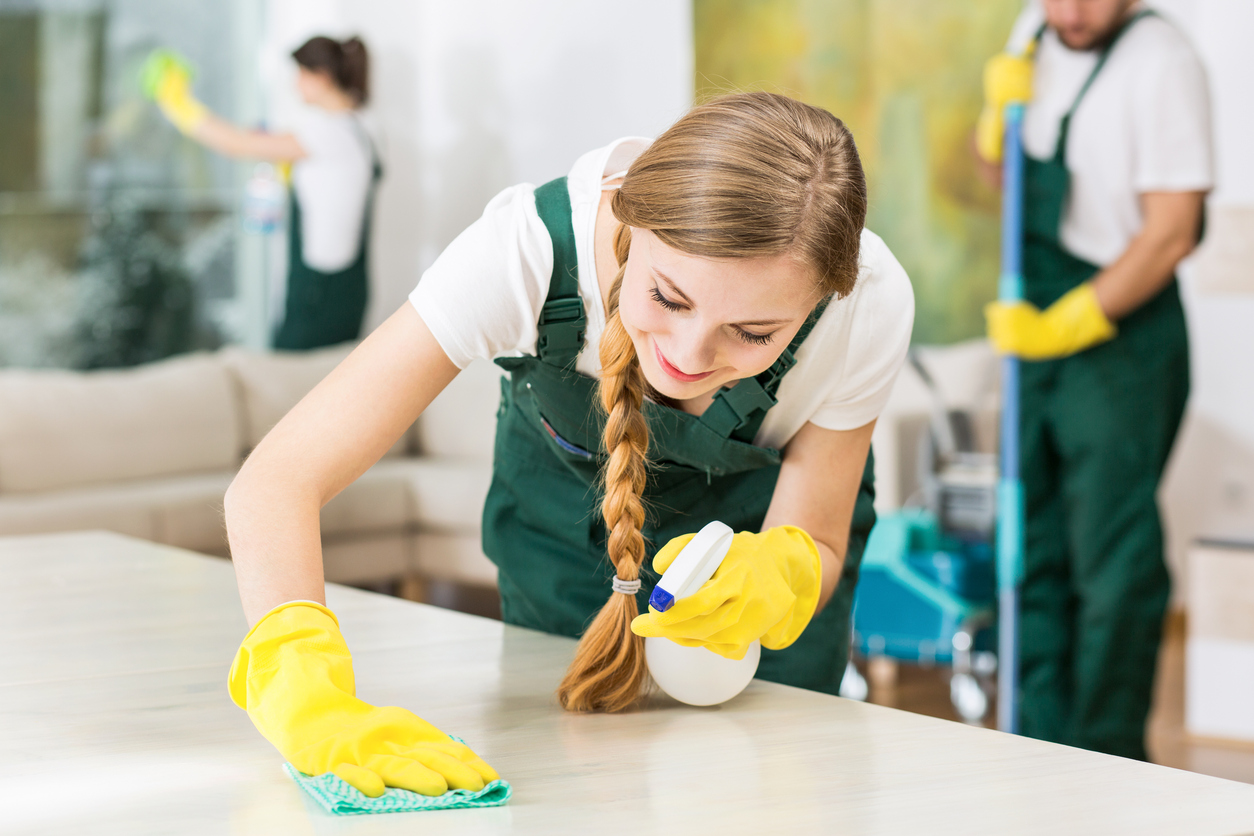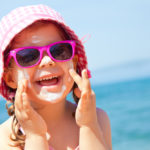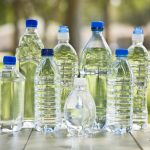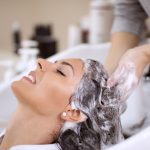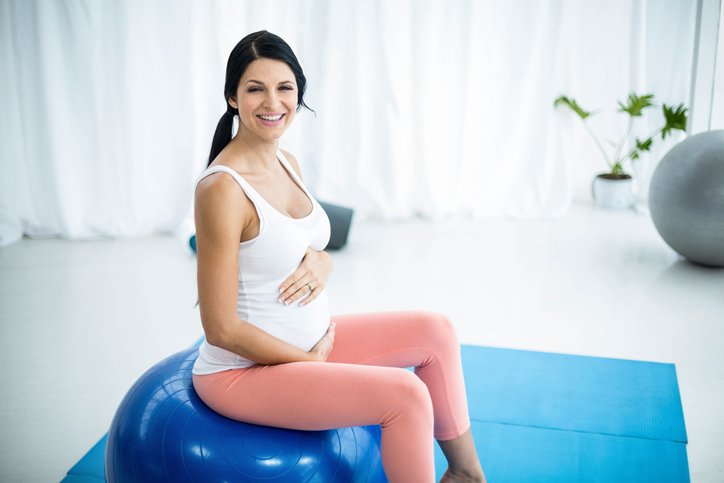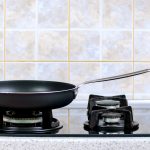You want a clean house, but at what cost? Many cleaning products contain toxic chemicals that are bad for both humans (especially little ones) and the environment.
If you’re concerned about your health and the health of the planet, then it makes sense to do a little digging and find out what’s really in the cleaning products you expose your family to every day.
The household cleaning industry is largely unregulated. Companies aren’t required to include ingredient lists for cleaning products the same way they are for food and personal care products.
This make the process of finding a non-toxic product even more challenging.
Hint – if a company doesn’t list the ingredients, you probably don’t want that product in your house! That’s a red flag for toxic household cleaners.
Don’t be fooled by marketing words like “green” or “natural” either, these terms don’t necessarily mean the product is any less toxic.
To help, we’ve done the research, and rounded up a list of the scariest substances lurking in your household products so you’ll know what to watch out for.
Toxic Household Cleaners: Top 8 Chemicals To Avoid
1. Phthalates
A lot of fragranced household products, like air fresheners, hand and dish soap, etc. contain phthalates, or “fragrance”.
Due to proprietary trade secret laws, companies don’t have to disclose what is in their scents, which is why you probably won’t see phthalates on the label, but if it says “fragrance” there’s a good chance it’s in there.
Phthalates are known endocrine disruptors. In addition, Information published in a 2015 issue of The Journal of Toxicological Sciences concluded that air fresheners are a source of volatile organic compounds (VOCs) in indoor environments.
When possible choose fragrance-free or all-natural organic products. Skip the aerosol or plug-in air fresheners and try using essential oils or simply opening windows to freshen the air instead.
2. Ammonia
This chemical is found in a variety of household cleaners; kitchen, bath, floor, oven, glass (window), and polishers. If the product is at least 5% ammonia, it has to be labeled “poisonous” which should be your first clue that ammonia is no joke.
Ammonia is a powerful irritant, short-term exposure to ammonia can irritate, burn, and even damage the eyes and skin. Long-term exposure can cause chronic bronchitis and asthma. Ammonia can create a poisonous gas If mixed with bleach (common in other cleaners). This is one you want to stay away from.
3. Sodium Hydroxide (aka Lye)
This chemical (found in oven cleaners and drain openers) is extremely corrosive. It can cause severe burns if it touches your skin or gets in your eyes.
If you’ve got toddlers in the house, you definitely want to be sure you don’t have any lye-containing products around!
Just inhaling this stuff can cause a sore throat that lasts for days. Swallowing it will cause serious injury and a trip to the ER. With a little more effort, you can clean most anything (safely) with baking-soda paste, no lye required.
4. Perchloroethylene or “Perc”
This chemical, found in dry-cleaning solutions, spot removers, and carpet cleaners, is a neurotoxin. People who’ve come in contact report dizziness, and other symptoms.
The state of California plans to eliminate all use of Perc by 2023, if that is any indication of the health risks associated with this chemical.

5. Triclosan
This chemical, which is classified as a pesticide (because that’s not creepy), is found in soaps labeled as “antibacterial”. It is an aggressive agent that can actually promote the growth of drug-resistant bacteria…probably not the effect you were going for.
Studies have also found dangerous concentrations of triclosan in rivers and streams, where it is toxic to algae. In addition, the EPA is currently investigating whether triclosan may also disrupt endocrine (hormonal) function.
Lots of reasons you want to steer clear of the antibacterial stuff and just use good old-fashioned natural soap.
6. Chlorine
The stuff that makes your eyes burn in the pool, can also be found in scouring powders, toilet bowl cleaners, mildew removers, laundry whiteners, and dishwashing detergents. Chlorine is a severe respiratory irritant, it can also by a thyroid disruptor if you are exposed to it over time.
Dishwashing detergents contain chlorine in a dry, concentrated form and the little packet versions (which can be brightly colored) have been mistaken as candy by curious children.
Laundry detergent packets are the leading cause of child poisoning!
You don’t want these products in your home.
7. Quarternary Ammonium Compounds (aka Quats)
These are found in fabric softener liquids and sheets and cleaners labeled “antibacterial”. Quats are another type of antimicrobial that pose the same problem as triclosan by helping breed antibiotic-resistant bacteria.
Quats are also a skin irritant; and they are suspected to cause asthma will long-term exposure.
8. 2-Butoxyethanol
This ingredient is found particularly in window cleaners, but it is also in some kitchen and multipurpose cleaners as well. It is what gives some window cleaners their notably sweet smell.
The law does not require manufacturers to list 2-Butoxyethanol on a product’s label, which can make it harder to identify. But it has been reported to cause sore throats and at high levels, can potentially cause pulmonary edema, and severe liver and kidney damage, so it’s worth looking out for.
Ways To Reduce The Toxicity Of Your Home
There are lots of ways to reduce the toxicity of your home.
- Do research.
- Know what chemicals to look out for (see above).
- Stop using known toxic brands and switch to natural, non-toxic alternatives (or make your own cleaners at home!).
- Read the labels of your household products and be especially careful of anything labeled “danger” or “corrosive”.
If you have kids, be sure to LOCK up anything that could be harmful on contact or if swallowed. Curious little hands go everywhere!
If you want to be 100% sure of what’s in your cleaning products, you can make your own non-toxic versions at home:
The Naturally Clean Home: 150 Super-Easy Herbal Formulas for Green Cleaning
SHARE the toxic household cleaners you want to avoid with friends on Facebook and Pinterest by clicking the buttons below.
